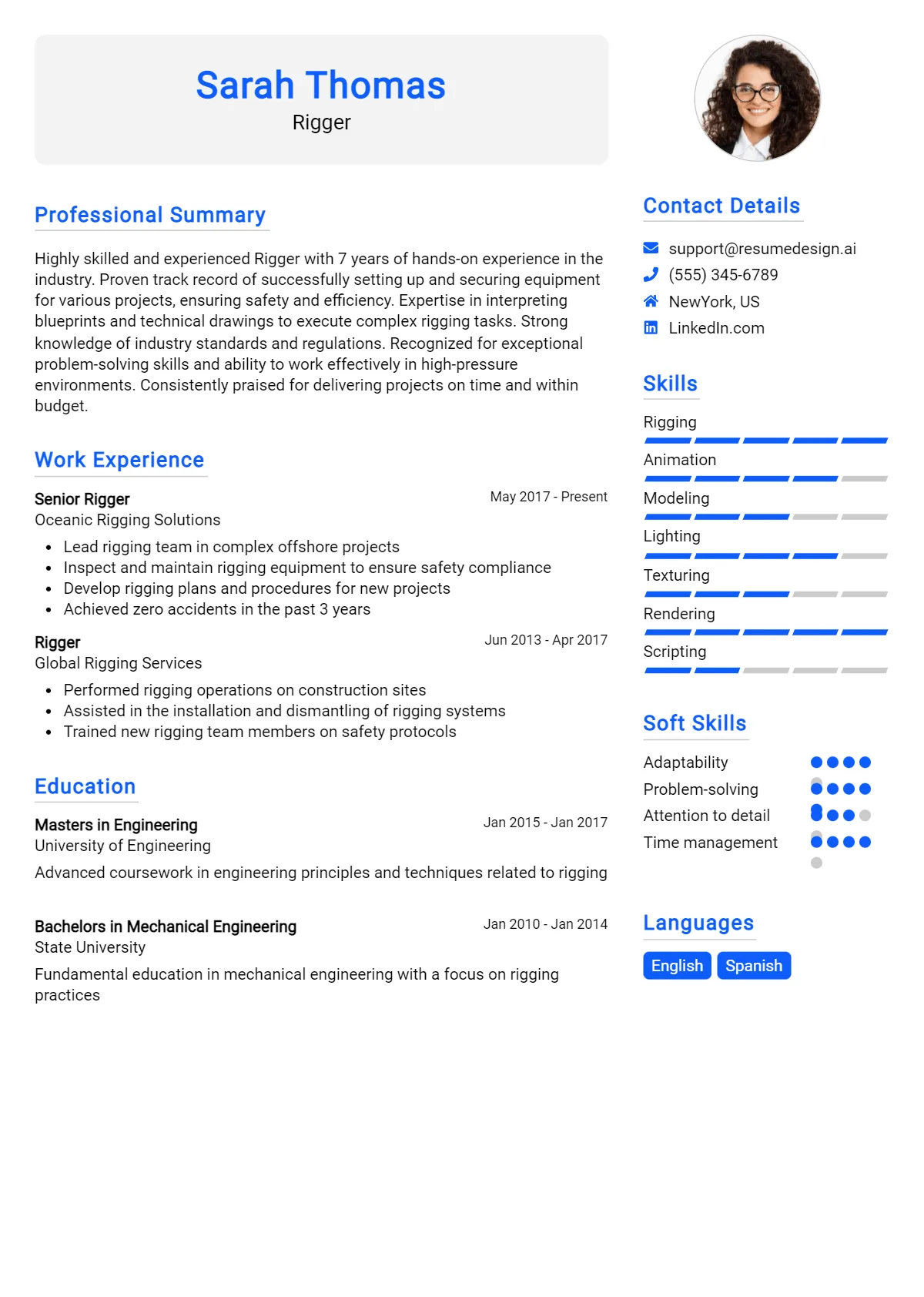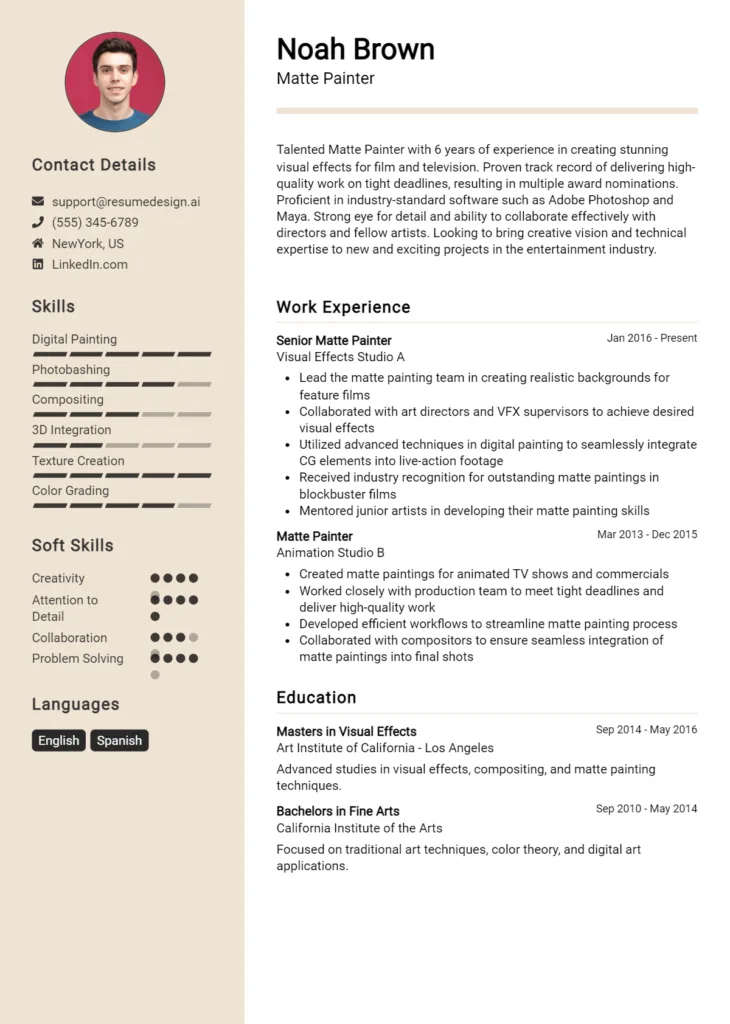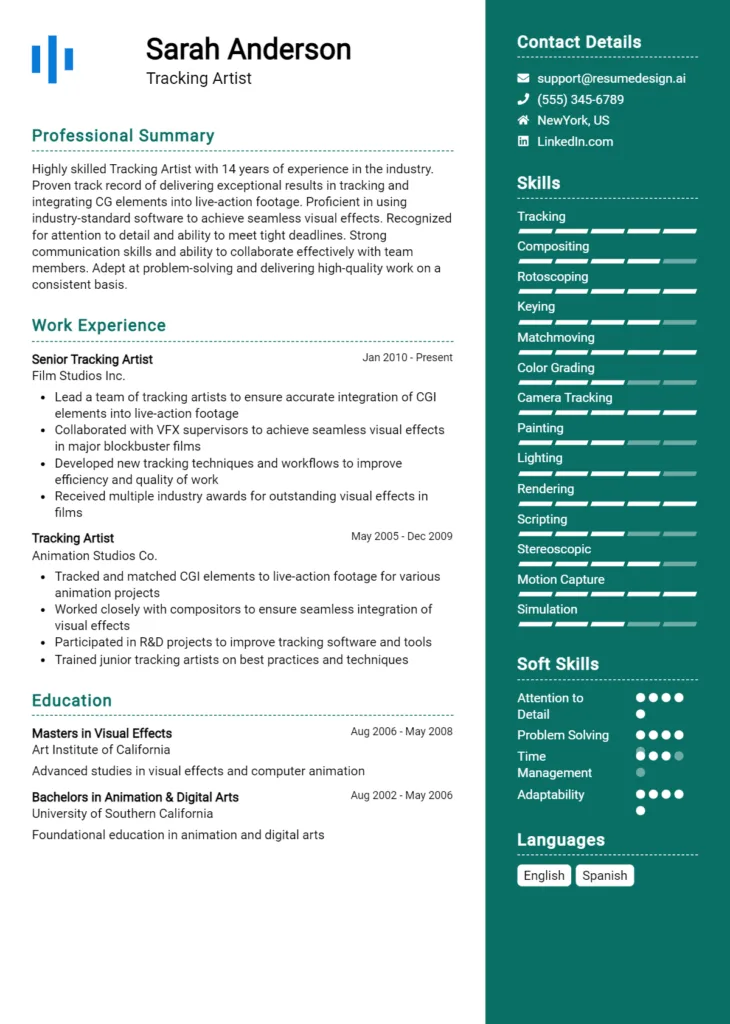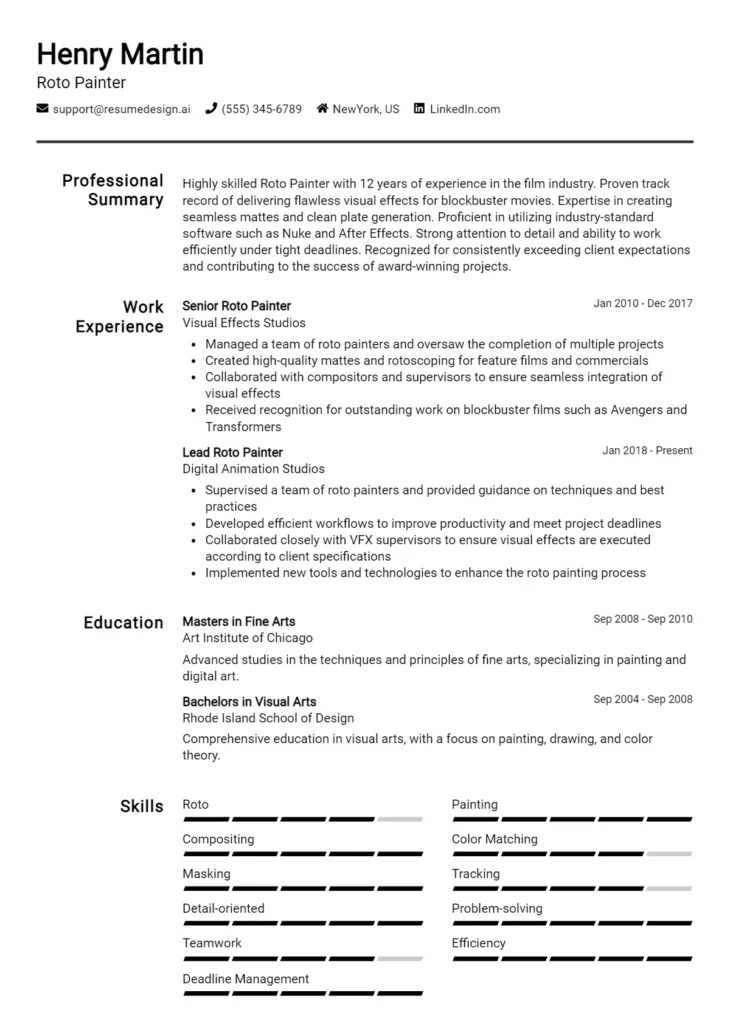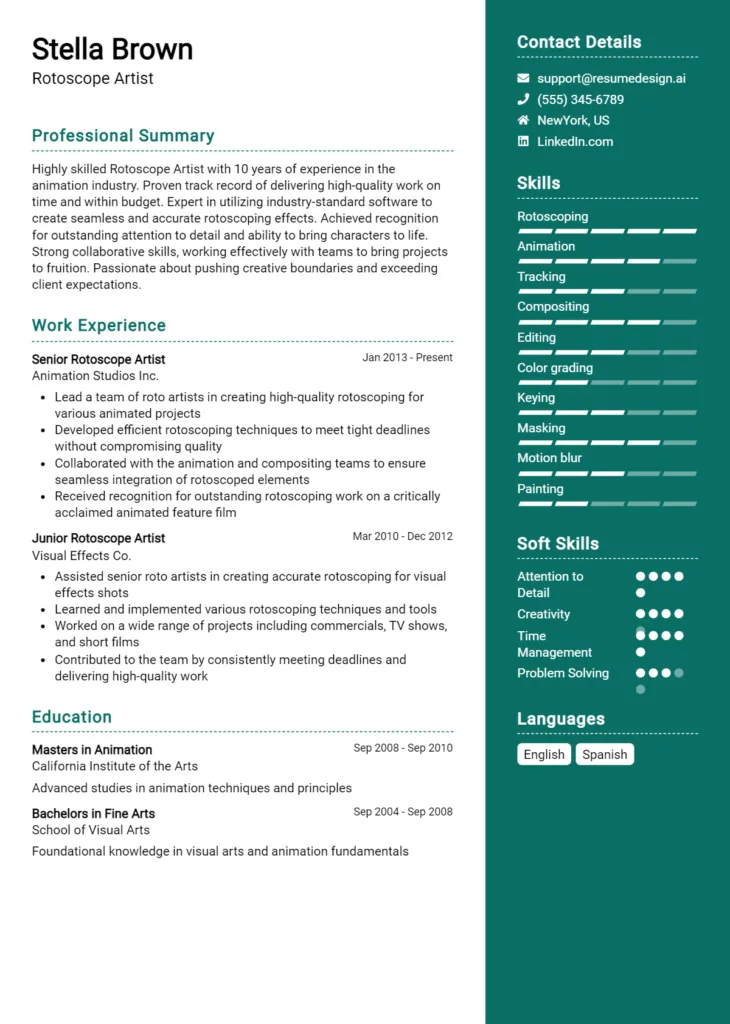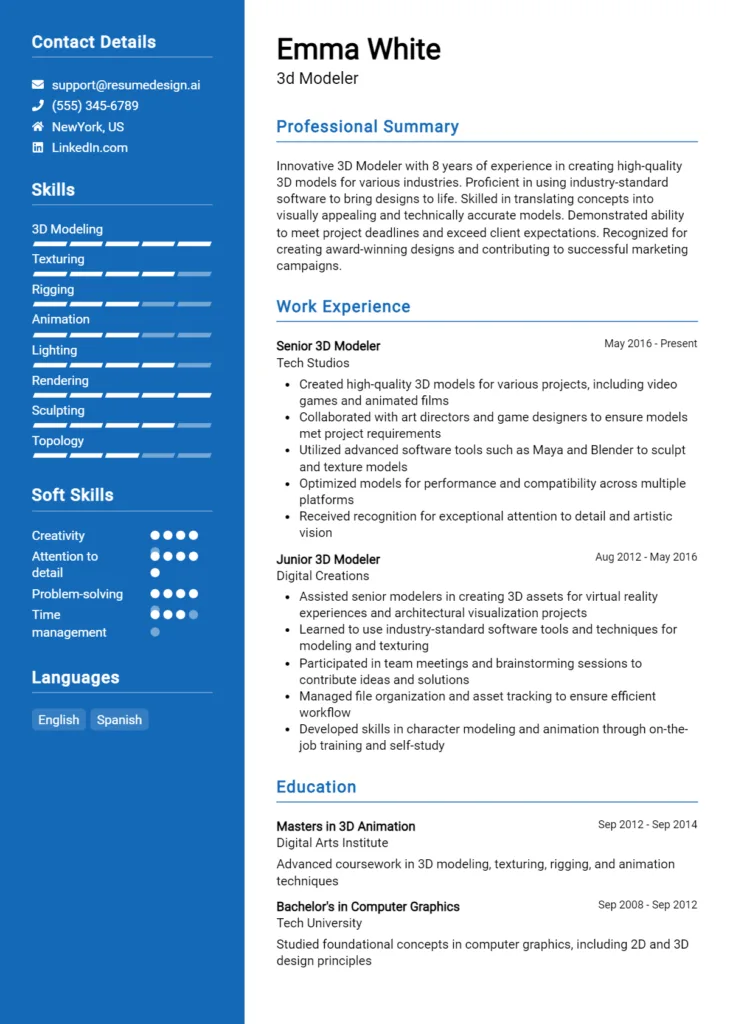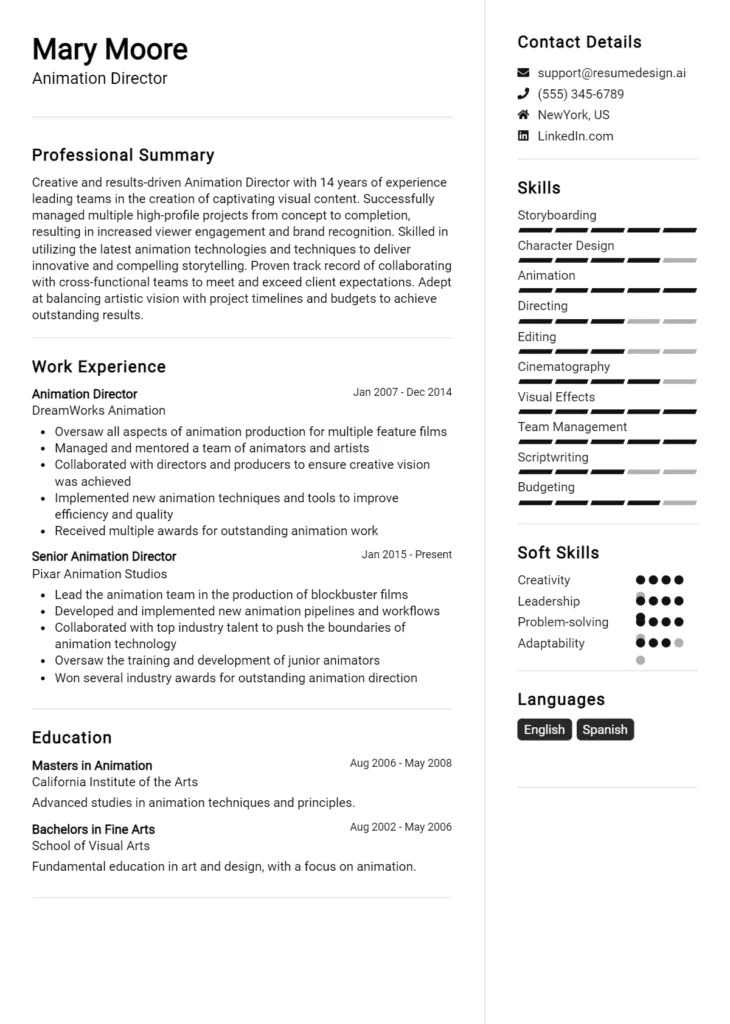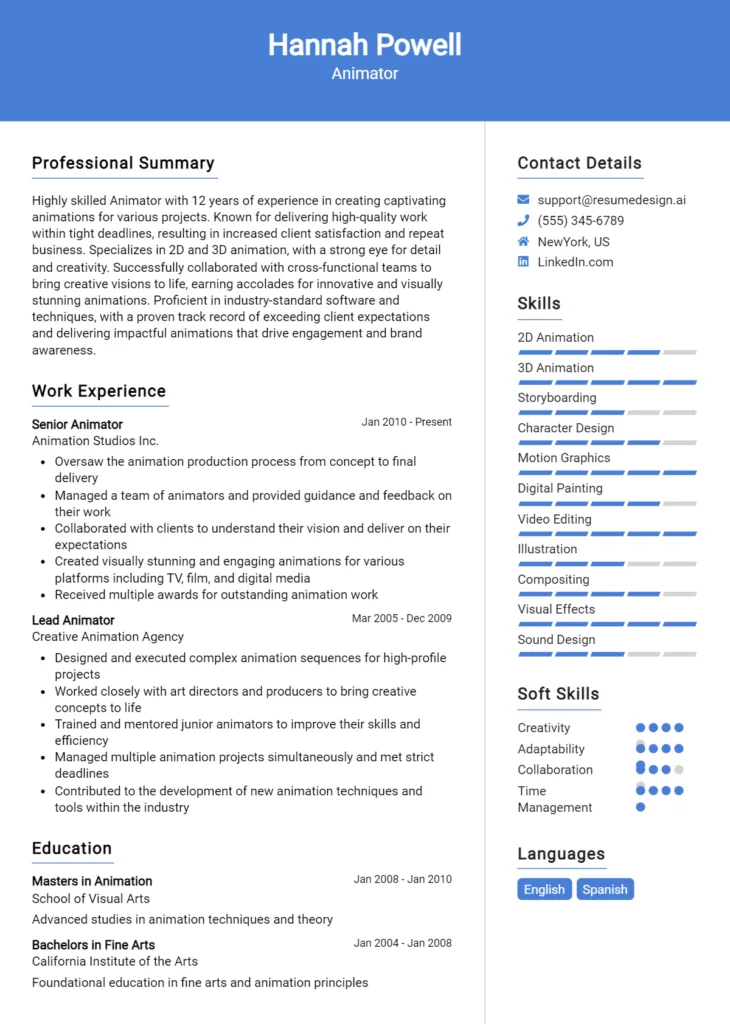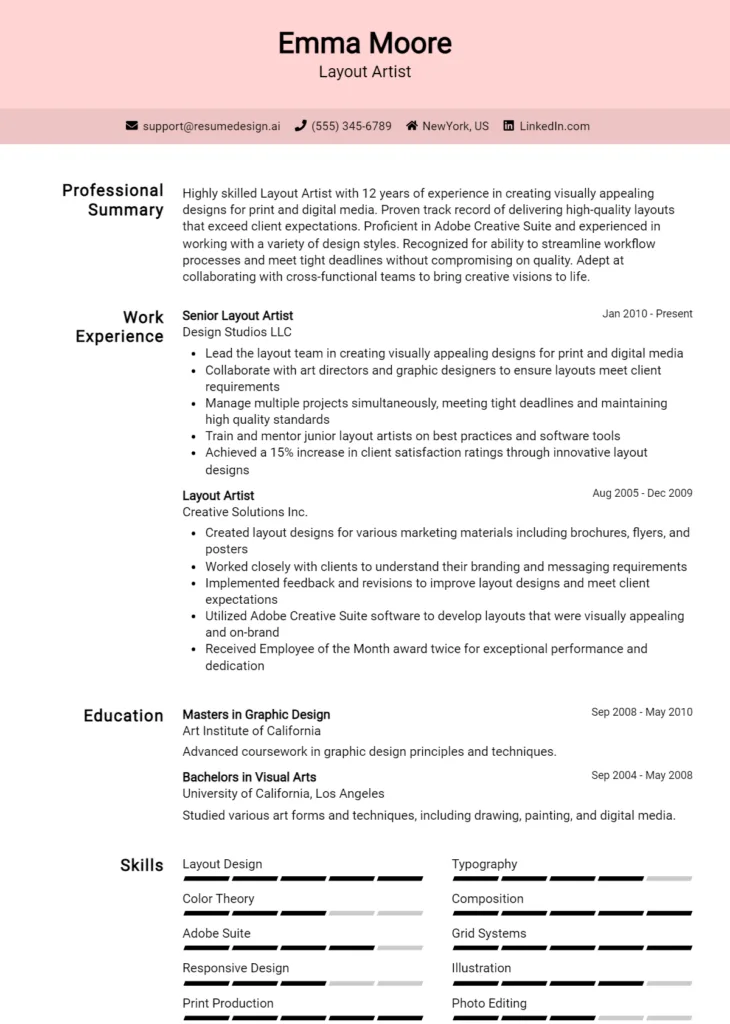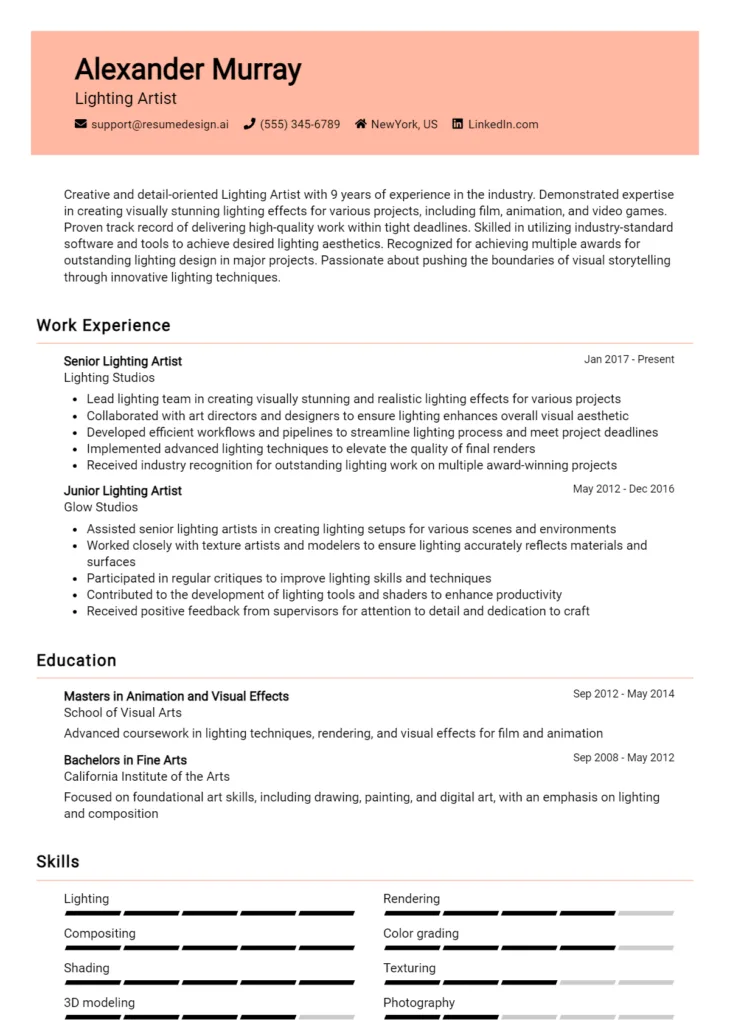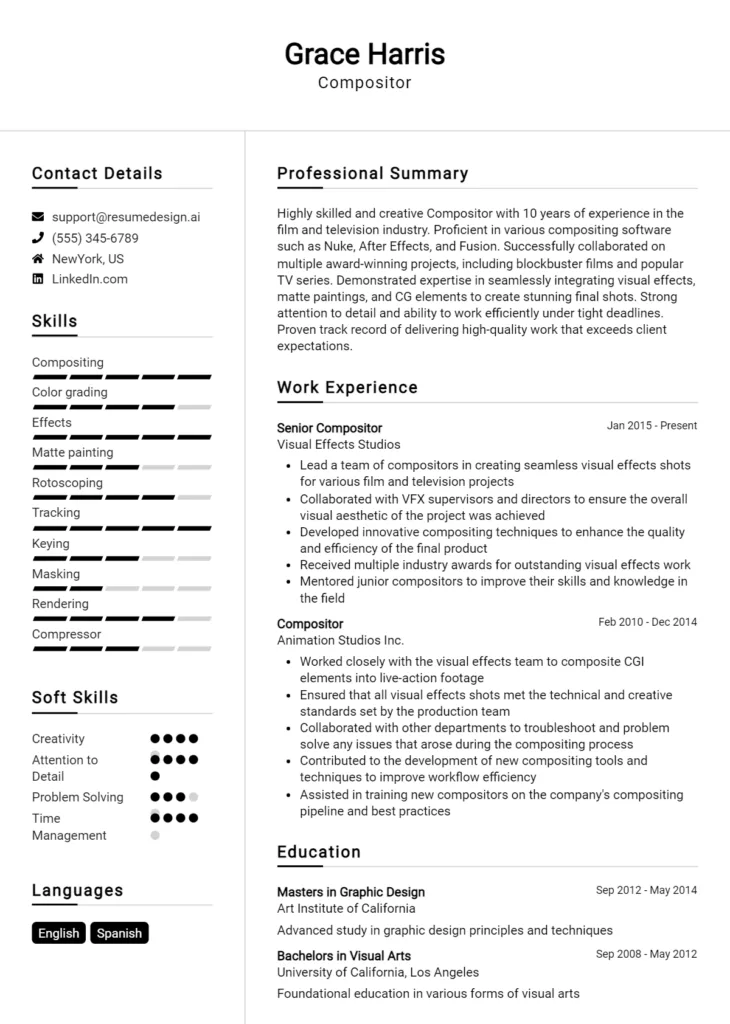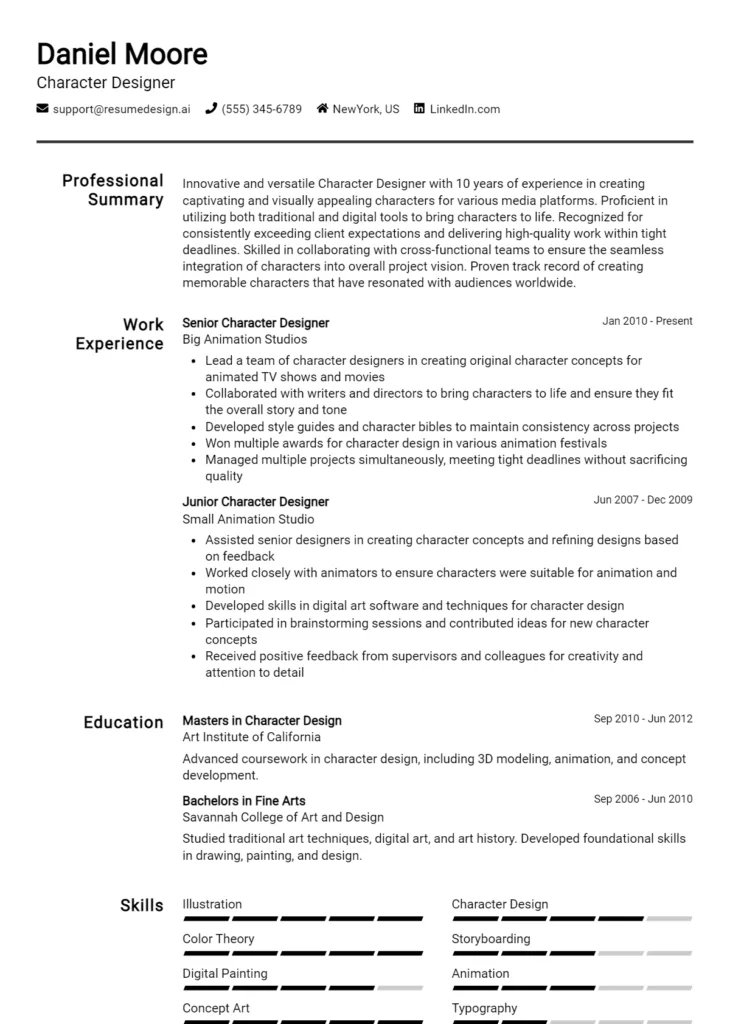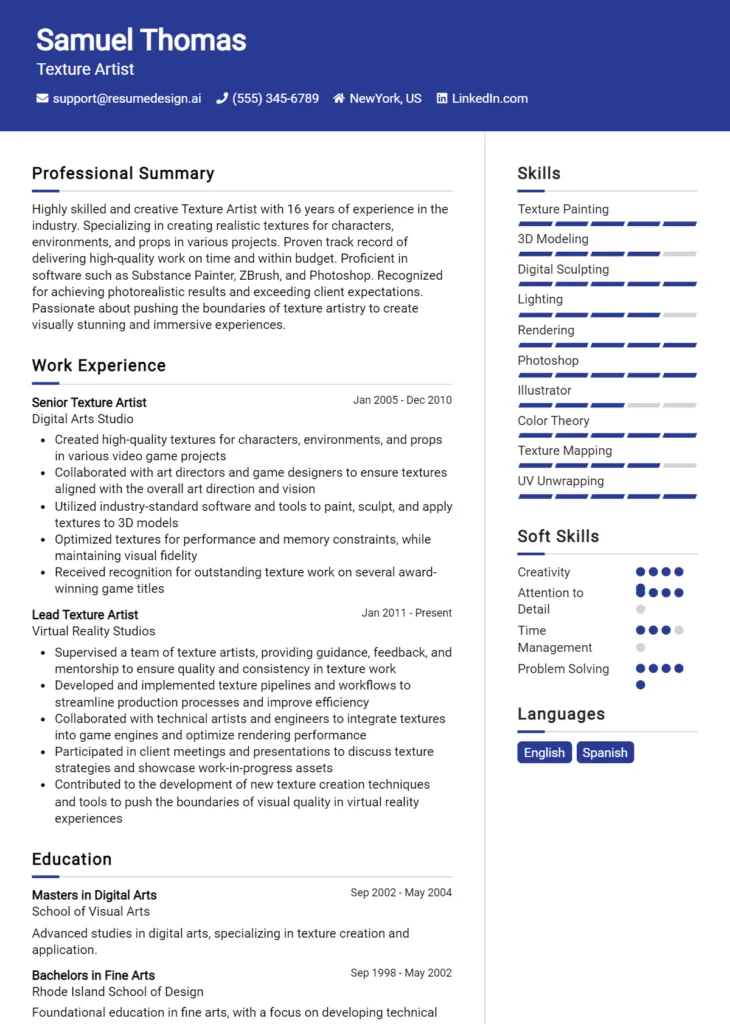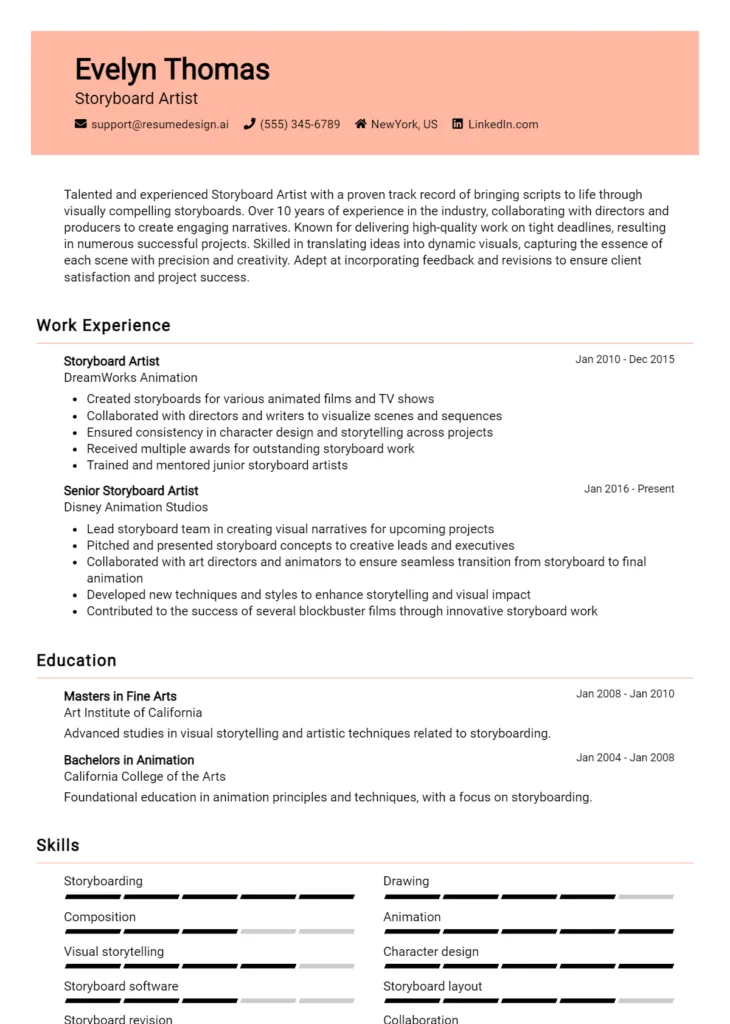Rigger Core Responsibilities
A Rigger plays a crucial role in various industries by ensuring the safe and efficient movement of heavy loads. Key responsibilities include selecting and inspecting rigging equipment, calculating load weights, and coordinating with different departments such as engineering and operations. Technical skills in equipment handling, operational knowledge of safety protocols, and strong problem-solving abilities are essential for success. These competencies not only support operational efficiency but also contribute to the organization’s overall goals. A well-structured resume can effectively showcase these qualifications, highlighting a candidate's ability to bridge gaps between functions and ensure seamless project execution.
Common Responsibilities Listed on Rigger Resume
- Selecting appropriate rigging equipment based on load specifications.
- Inspecting and maintaining rigging gear to ensure safety compliance.
- Calculating load weights and determining rigging configurations.
- Collaborating with crane operators and project managers during lifts.
- Executing lift plans and ensuring adherence to safety protocols.
- Monitoring lifting operations and addressing any issues that arise.
- Training and mentoring junior riggers on best practices.
- Documenting rigging activities and maintaining accurate logs.
- Conducting risk assessments and ensuring compliance with regulations.
- Utilizing technical manuals and schematics for reference.
- Adapting rigging strategies based on site-specific challenges.
- Participating in safety meetings and contributing to safety initiatives.
High-Level Resume Tips for Rigger Professionals
A well-crafted resume is crucial for Rigger professionals, as it often serves as the first impression a candidate makes on a potential employer. In a competitive job market, your resume must effectively showcase not only your skills and certifications but also your achievements and experience in the field. A strong resume can open doors to interviews and opportunities, highlighting your qualifications and dedication to safety and precision in rigging operations. This guide will provide practical and actionable resume tips specifically tailored for Rigger professionals, empowering you to create a standout application that captures the attention of hiring managers.
Top Resume Tips for Rigger Professionals
- Tailor your resume to each job description by incorporating specific keywords and phrases that align with the requirements.
- Showcase relevant experience by detailing past projects, emphasizing your roles and responsibilities in rigging operations.
- Quantify your achievements by including metrics and statistics, such as the number of successful lifts completed or safety incidents avoided.
- Highlight industry-specific skills, such as knowledge of rigging equipment, safety protocols, and load calculations.
- Include certifications and training relevant to rigging, such as OSHA certification, NCCCO certification, or specialized rigging courses.
- Use action verbs to describe your experience, creating a dynamic narrative that illustrates your contributions to previous employers.
- Keep the format clean and professional, using bullet points for easy reading and ensuring consistent font and spacing.
- Incorporate a summary statement at the top of your resume that captures your key qualifications and career goals in rigging.
- Proofread for errors and inconsistencies, as attention to detail is critical in the rigging profession.
Implementing these tips can significantly increase your chances of landing a job in the Rigger field. By creating a focused and compelling resume that highlights your skills and accomplishments, you position yourself as a strong candidate who stands out to potential employers. Remember, a well-prepared resume not only reflects your qualifications but also demonstrates your professionalism and commitment to the rigging industry.
Why Resume Headlines & Titles are Important for Rigger
In the highly specialized field of rigging, a well-crafted resume headline or title plays a crucial role in capturing the attention of hiring managers. Given the competitive nature of the industry, a strong headline can serve as an immediate hook, summarizing a candidate's key qualifications and strengths in one impactful phrase. A concise and relevant headline not only highlights the candidate's suitability for the Rigger position but also sets the tone for the rest of the resume, making it essential for job seekers to carefully consider their choice of words.
Best Practices for Crafting Resume Headlines for Rigger
- Keep it concise: Aim for a single powerful phrase that captures your qualifications.
- Be role-specific: Include the job title and relevant skills specific to rigging.
- Highlight key strengths: Emphasize your most impressive skills or accomplishments.
- Use action words: Start with strong verbs that convey your expertise.
- Avoid jargon: Use clear language that hiring managers can easily understand.
- Tailor it to the job: Customize your headline for each application to reflect the job description.
- Showcase certifications: Mention any relevant certifications that set you apart.
- Maintain professionalism: Ensure the tone is appropriate for the industry.
Example Resume Headlines for Rigger
Strong Resume Headlines
Certified Rigger with 5 Years of Experience in Heavy Lifting Operations
Expert Rigger Specializing in Safety Compliance and Load Management
Dynamic Rigger with Proven Track Record in High-Pressure Environments
Skilled Rigger with Extensive Knowledge of OSHA Regulations
Weak Resume Headlines
Rigger Looking for Work
Experienced Worker in Construction
The strong headlines are effective because they immediately communicate the candidate's qualifications, experience, and specific skills relevant to the Rigger position. They are tailored, impactful, and give hiring managers a clear understanding of what the candidate brings to the table. In contrast, the weak headlines fail to make an impression due to their vagueness and lack of specificity, leaving hiring managers with little insight into the candidate's actual competencies and suitability for the role.
Writing an Exceptional Rigger Resume Summary
A resume summary is a crucial component for any Rigger looking to make an impression on potential employers. It serves as a powerful introduction that quickly captures the attention of hiring managers by succinctly highlighting key skills, relevant experience, and notable accomplishments in the field. A strong summary not only provides a snapshot of the candidate’s qualifications but also sets the tone for the rest of the resume, making it essential for job seekers to craft a concise and impactful summary tailored specifically to the position they are applying for.
Best Practices for Writing a Rigger Resume Summary
- Quantify Achievements: Use numbers to demonstrate your accomplishments, such as the weight of materials handled or the number of projects completed successfully.
- Focus on Skills: Highlight specific skills relevant to rigging, such as expertise in various rigging techniques, safety protocols, and equipment operation.
- Tailor Your Summary: Customize your summary for each job application by incorporating keywords from the job description.
- Keep it Concise: Aim for 2-4 sentences that are direct and to the point, avoiding unnecessary jargon.
- Showcase Relevant Experience: Mention specific industries or projects that relate directly to the job you are applying for.
- Highlight Certifications: Include any relevant certifications or licenses that enhance your qualifications as a Rigger.
- Use Action Verbs: Start sentences with strong action verbs to convey confidence and proactivity.
- Convey Enthusiasm: Express your passion for the rigging profession and commitment to safety and excellence.
Example Rigger Resume Summaries
Strong Resume Summaries
Detail-oriented Rigger with over 7 years of experience in heavy lifting and complex rigging operations. Successfully managed a team of 5 on-site for a major construction project, enhancing operational efficiency by 30% while ensuring compliance with safety regulations.
Certified Rigger skilled in both traditional and advanced rigging techniques, with a proven track record of completing over 50 successful lifts in high-pressure environments. Recognized for exceptional ability to assess risks and implement safety protocols, resulting in zero accidents during tenure.
Dedicated Rigger with expertise in crane operation and load calculations, contributing to the successful completion of a $10 million infrastructure project. Proficient in using CAD software to plan rigging layouts, which reduced equipment downtime by 20%.
Weak Resume Summaries
I am a Rigger with experience in lifting heavy things. I have worked on various projects and can follow safety rules.
Motivated worker looking for a Rigger position. I have some experience and am willing to learn more about rigging.
The strong resume summaries are considered effective because they provide specific examples of accomplishments, use quantifiable results, and directly relate to the Rigger role, demonstrating the candidate's value to potential employers. In contrast, the weak summaries lack detail and specificity, making them vague and unmemorable, ultimately failing to showcase the candidate's qualifications or unique strengths.
Work Experience Section for Rigger Resume
The work experience section of a Rigger resume is crucial as it serves as a comprehensive showcase of the candidate's technical skills, leadership abilities, and commitment to delivering high-quality results. This section allows potential employers to assess the applicant’s hands-on experience in rigging operations, ability to manage teams effectively, and track record of successful project completions. By quantifying achievements and aligning experiences with industry standards, candidates can create a compelling narrative that highlights their qualifications and sets them apart in a competitive job market.
Best Practices for Rigger Work Experience
- Emphasize technical skills relevant to rigging operations, such as load calculations and equipment usage.
- Quantify achievements with metrics, such as the number of projects completed on time or safety incidents avoided.
- Highlight leadership roles and experiences in managing teams, ensuring safety, and optimizing workflow.
- Use industry-standard terminology to demonstrate familiarity with rigging practices and safety regulations.
- Detail collaborative efforts with other trades or departments to illustrate teamwork and communication skills.
- Focus on specific projects that showcase diverse rigging techniques and problem-solving capabilities.
- Include any certifications or training that enhance credibility in the rigging field.
- Maintain clarity and conciseness in descriptions to effectively communicate past responsibilities and accomplishments.
Example Work Experiences for Rigger
Strong Experiences
- Successfully led a team of 10 riggers in a major construction project, resulting in a 20% reduction in project completion time while maintaining a perfect safety record.
- Engineered and executed rigging plans for the installation of a 50-ton crane, ensuring compliance with all safety regulations and achieving zero incidents.
- Developed training protocols for junior riggers, enhancing team competency and reducing on-site errors by 30% over a six-month period.
- Collaborated with engineering teams to redesign rigging layouts, increasing operational efficiency by 15% and minimizing equipment downtime.
Weak Experiences
- Worked as a rigger on various projects.
- Assisted in some rigging tasks and followed safety procedures.
- Helped with team rigging efforts occasionally.
- Involved in general rigging work without specific details provided.
The examples provided illustrate the difference between strong and weak experiences based on clarity and impact. Strong experiences are detailed and quantifiable, showcasing leadership, technical expertise, and collaboration, thus demonstrating a clear value to potential employers. In contrast, weak experiences lack specificity and measurable outcomes, failing to convey the candidate's true capabilities and contributions in their role as a rigger.
Education and Certifications Section for Rigger Resume
The education and certifications section of a Rigger resume is crucial as it serves to showcase the candidate's academic qualifications, industry-relevant certifications, and commitment to continuous learning. This section not only reflects the foundational knowledge necessary for rigging but also highlights specialized training that can set a candidate apart in a competitive job market. By including relevant coursework, certifications, and any specialized training, candidates can enhance their credibility and demonstrate their alignment with the specific requirements of the job role they are pursuing.
Best Practices for Rigger Education and Certifications
- Prioritize industry-recognized certifications, such as NCCCO or CIC, that reinforce your qualifications.
- List relevant coursework or degrees, such as a degree in Construction Management or Mechanical Engineering.
- Include specialized training programs that pertain to the rigging industry, such as crane operation or safety training.
- Use clear and concise language to describe your educational background and certifications.
- Ensure that the certifications listed are current and have not expired.
- Highlight any hands-on training or apprenticeships that provide practical experience.
- Organize the section in reverse chronological order, starting with the most recent qualifications.
- Consider including any relevant continuing education courses that demonstrate ongoing professional development.
Example Education and Certifications for Rigger
Strong Examples
- Bachelor of Science in Construction Management, XYZ University, 2021
- NCCCO Certified Rigger Level I, Certification Number: 123456, Expires: 2024
- OSHA 10-Hour General Industry Safety Training, Completed: March 2022
- Cranes and Rigging Safety Course, ABC Training Institute, Completed: June 2023
Weak Examples
- High School Diploma, 2010
- Certified Forklift Operator (Expired, 2018)
- Basic First Aid Training, Completed: 2015
- Online Course in General Construction (not rigging-specific), Completed: 2020
The strong examples are considered effective because they include relevant degrees and certifications that are recognized within the rigging industry, showcasing the candidate's preparedness for the role. They emphasize recent and applicable training, which is critical for safety and skill proficiency. Conversely, the weak examples lack relevance to the rigging profession, include outdated or expired certifications, and do not demonstrate specialized knowledge or skills that would be beneficial in a rigger position. This distinction highlights the importance of aligning educational qualifications and certifications with the specific demands of the job role.
Top Skills & Keywords for Rigger Resume
As a Rigger, possessing the right skills is crucial for ensuring safety, efficiency, and effectiveness on the job. A well-crafted resume highlights these skills, demonstrating to potential employers that you have the expertise required to handle the complexities of rigging operations. By emphasizing both soft and hard skills, you can create a comprehensive picture of your capabilities. This not only enhances your employability but also showcases your commitment to the highest standards of safety and professionalism in the industry.
Top Hard & Soft Skills for Rigger
Soft Skills
- Attention to Detail
- Communication Skills
- Teamwork and Collaboration
- Problem-Solving Skills
- Adaptability and Flexibility
- Time Management
- Leadership Abilities
- Critical Thinking
- Stress Management
- Work Ethic
Hard Skills
- Knowledge of Rigging Techniques
- Familiarity with Hoisting Equipment
- Proficient in Load Calculations
- Understanding of Safety Protocols
- Experience with Crane Operations
- Ability to Read Blueprints and Schematics
- Proficient in Operating Rigging Tools
- Knowledge of OSHA Regulations
- Experience with Inspection Procedures
- Proficient in Using Communication Devices
By showcasing your skills and relevant work experience, you can create a compelling resume that stands out to hiring managers in the field of rigging.
Stand Out with a Winning Rigger Cover Letter
Dear Hiring Manager,
I am writing to express my interest in the Rigger position at [Company Name], as advertised on [Job Board/Company Website]. With over [number] years of experience in rigging and heavy lifting operations, I am confident in my ability to contribute effectively to your team. My background in safely and efficiently coordinating lifting operations, combined with my commitment to adhering to industry standards, positions me as an ideal candidate for this role.
In my previous position at [Previous Company Name], I was responsible for planning and executing rigging operations for various construction projects. I have a thorough understanding of rigging techniques, equipment selection, and load calculations, which allowed me to streamline processes and enhance safety. I take pride in my ability to work collaboratively with crane operators, ground crews, and project managers to ensure that all operations are conducted smoothly and without incident. My attention to detail and proactive approach have significantly minimized downtime and improved overall efficiency on-site.
Safety is my top priority, and I am well-versed in OSHA regulations and best practices in rigging. I consistently participate in safety training programs and stay updated on industry developments to ensure compliance and minimize risks. My strong communication skills enable me to effectively convey instructions and safety protocols to team members, fostering a culture of safety and teamwork. I am excited about the opportunity to bring my expertise and dedication to [Company Name] and contribute to the success of your projects.
Thank you for considering my application. I look forward to the opportunity to discuss how my skills and experience align with the needs of your team. I am eager to contribute to [Company Name] and help achieve its goals through safe and efficient rigging operations.
Sincerely,
[Your Name]
[Your Phone Number]
[Your Email Address]
[LinkedIn Profile or Professional Website, if applicable]
Common Mistakes to Avoid in a Rigger Resume
When crafting a resume for a rigger position, it's essential to present your skills and experience clearly and effectively. However, many applicants make common mistakes that can hinder their chances of landing an interview. Understanding these pitfalls can help you create a more compelling resume that showcases your qualifications and aligns with industry standards.
Neglecting Relevant Certifications: Failing to include certifications such as NCCCO or OSHA can make your resume less competitive, as employers often look for these qualifications.
Using Vague Job Descriptions: Instead of using generic descriptions, be specific about your previous roles. Highlight particular tasks and responsibilities that demonstrate your expertise in rigging.
Overloading with Technical Jargon: While it’s important to show your technical knowledge, using excessive jargon can confuse hiring managers. Aim for clarity and balance technical terms with accessible language.
Ignoring Soft Skills: Riggers need strong communication and teamwork skills. Don’t overlook these attributes; include examples of how you’ve successfully collaborated with others on projects.
Omitting Safety Practices: Safety is paramount in rigging jobs. Failing to mention your understanding and implementation of safety protocols can be a significant oversight.
Using an Unprofessional Format: A cluttered or overly complicated resume format can detract from your content. Stick to a clean, professional layout that makes it easy for employers to read.
Listing Irrelevant Experience: While all experience can be valuable, focusing on roles that are not related to rigging may dilute your qualifications. Tailor your work history to showcase relevant positions.
Neglecting to Tailor the Resume: Sending the same resume to multiple employers without tailoring it to each job description can be a mistake. Customize your resume to reflect the specific skills and experiences each employer is seeking.
Conclusion
As we conclude our exploration of the Rigger role, it's essential to emphasize the importance of presenting your skills and experiences effectively through your resume. Riggers play a crucial role in various industries, ensuring safety and efficiency in lifting and moving heavy loads. Highlighting your technical skills, certifications, and hands-on experience can significantly enhance your job prospects.
To ensure your resume stands out in today's competitive job market, consider reviewing and updating it regularly. Take advantage of the resources available to you, such as resume templates, which can provide a professional layout that captures attention. Additionally, using a resume builder can streamline the process, allowing you to create a polished resume in no time.
Don't forget to explore resume examples tailored for Riggers to gain inspiration and insights into how to effectively present your qualifications. Lastly, a compelling cover letter can further set you apart; check out the cover letter templates available to help you craft a persuasive narrative about your skills and experiences.
Now is the time to take action! Review your Rigger resume today and make the necessary updates to ensure it reflects your expertise and readiness for your next career opportunity.

